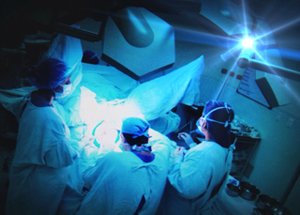|
|
|
 |
 |
| The vaginal hysterectomy was done before when the prolapsed uterus or womb through the vagina. Now, with new techniques in the management of pelvic floor, you can perform the surgery vaginally, even when patients do not have prolapse, this new technique is known as Vaginal hysterectomy without prolapse. |


|
|
It is a very short procedure of 30-60 minutes, excellent recovery, almost without pain and without scars. Vaginal Hysterectomy takes advantage of the natural orifice is the vagina, and is the one with better and faster recovery.
It is an extraordinary way to remove the uterus and is the preferred route in many European centers and now in Cucuta, Colombia requires experience in vaginal surgery, surgery Pelvic Floor and Urogynecology for often must still be made in very large uterus with fibroids and Coinciding with pelvic floor repair (amplitude correction vaginal, vaginal rejuvenation, correction of prolapses of the bladder or rectum and treat urinary incontinence).
Today also performed without any concomitant prolapse, even as already mentioned, in very large uterus for myomas. A big advantage is recovery; the patient is asymptomatic almost the next day and at home.
|
| LEARN MORE ABOUT HYSTERECTOMY: |
The main cause of hysterectomy are uterine fibroids; These are benign tumors of the uterus that can cause abnormal bleeding, pain, and if they are larger compression of neighboring organs such as the bladder or rectum. Other causes of hysterectomy are persistent uterine bleeding, malignant or pre-malignant conditions Cervical or endometrium (lining of the uterus) and one of the most important: the genital prolapse. In such cases the uterus is so down you can even leave the vagina and cause pain, irritation and constant obstacle to sex. |
| Hysterectomy has several surgical alternatives: |
| |
 Abdominal hysterectomy Abdominal hysterectomy |
 Vaginal hysterectomy (with prolapses) Vaginal hysterectomy (with prolapses) |
 Laparoscope vaginal hysterectomy Laparoscope vaginal hysterectomy |
 Laparoscope-assisted vaginal hysterectomy Laparoscope-assisted vaginal hysterectomy |
 Laparoscopic hysterectomy with Morcellation Uterine Supracervical Laparoscopic hysterectomy with Morcellation Uterine Supracervical |
 NEW - Vaginal hysterectomy whith prolapse by Dr. Álvaro Ochoa NEW - Vaginal hysterectomy whith prolapse by Dr. Álvaro Ochoa |
|
| |
Abdominal Hysterectomy is the most frequently performed and involves removing the uterus through the abdominal wall by a transverse incision (cesarean) or longitudinal (the pubis to the navel), the latter should now be reserved almost exclusively for cases oncology (cancer). This type of hysterectomy is not part of what today we call minimally invasive surgery because although only requires one day of hospitalization, is relatively painful, in his surgery. It is one of the most commonly performed procedures, since the laparoscopic technique is much more expensive, but much better, for its prompt and speedy recovery.
The other hysterectomies include using a laparoscope is a tube with a camera inserted through the navel, which displays most of the abdominal organs and injects gas to keep relaxed. Two or three small abdominal punctures low of 5 mm each, for which the instruments are inserted are added. These are coagulators, tweezers and scissors.
One of the most practiced is the Total Laparoscopic Hysterectomy, in which the uterus is removed from their bras by coagulation and cut until it completely loose in the abdominal cavity. It is then removed through the opening that is in the vagina, which was then sutured. Also morcelándolo uterus can be removed, ie by grinding and removing parts with special equipment.
It is for this reason that vaginal hysterectomy without prolapse becomes more modern and less invasive alternative and now you can access it in Cucuta, Colombia with Dr. Alvaro Ochoa C.
|
|
Videos: |
| |
|
|
 |
|
|
|

